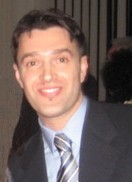Program Information
Can the Dynamic Library of Flap Applicators Replace Treatment Planning in Surface Brachytherapy?
I Buzurovic*, P Devlin, J Hansen, D O'Farrell, M Bhagwat, S Friesen, A Damato, T Harris, R Cormack, Dana-Farber/Brigham and Women's Cancer Center, Harvard Medical School, Boston, MA
Presentations
SU-G-201-4 (Sunday, July 31, 2016) 4:00 PM - 6:00 PM Room: 201
Purpose: Contemporary brachytherapy treatment planning systems-(TPS) include the applicator model libraries to improve digitization; however, the library of surface-flap-applicators-(SFA) is not incorporated into the commercial TPS. We propose the dynamic library-(DL) for SFA and investigate if such library can eliminate applicator reconstruction, source activation and dose normalization.
Methods: DL was generated for the SFA using the C++class libraries of the Visualization Toolkit-(VTK) and Qt-application framework for complete abstraction of the graphical interface. DL was designed such that the user can initially choose the size of the applicator that corresponds to the one clinically placed to the patient. The virtual applicator-(VA) has an elastic property so that it can be registered to the clinical CT images with a real applicator-(RA) on it. The VA and RA matching is performed by adjusting the position and curvature of the VA. The VA does not elongate or change its size so each catheter could always be at a distance of 5mm from the skin and 10mm apart from the closest catheter maintaining the physical accuracy of the clinical setup. Upon the applicator placement, the dwell positions were automatically activated, and the dose is normalized to the prescription depth. The accuracy of source positioning was evaluated using various applicator sizes.
Results: The accuracy of the applicator placement was in the sub-millimeter range. The time-study reveals that up to 50% of the planning time can be saved depending on the complexity of the clinical setup. Unlike in the classic approach, the planning time was not highly dependent on the applicator size.
Conclusion: The practical benefits of the DL of the SFA were demonstrated. The time demanding planning processes can be partially automated. Consequently, the planner can dedicate effort to fine tuning, which can result in the improvement of the quality of treatment plans in surface brachytherapy.
Contact Email:

